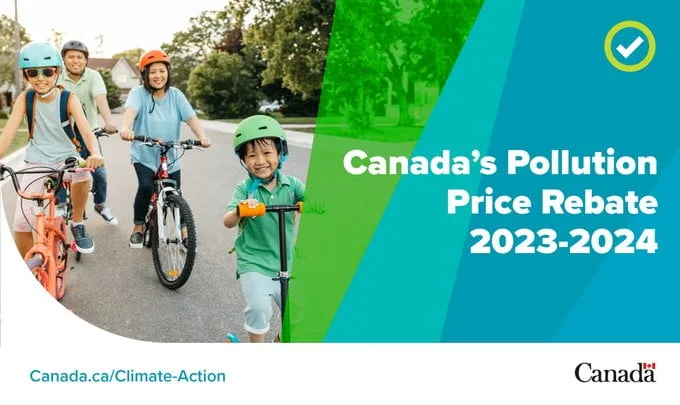Gatineau – Canada’s approach to pollution pricing is not only one of the best ways to fight climate change, it also puts money back into the pockets of individuals and families. The direct proceeds from the federal pollution price are returned to the jurisdiction from which they were collected to help with cost-of-living challenges while keeping the incentive to pollute less.
On January 15, 2024, people living in provinces where the federal fuel charge applies will receive their first pollution pricing rebate of the year through direct bank deposit or by cheque. This means a family of four will receive a pollution price rebate, called the Climate Action Incentive payment, in the following amounts:
- $386 in Alberta
- $264 in Manitoba
- $184 in New Brunswick
- $328 in Newfoundland and Labrador
- $248 in Nova Scotia
- $244 in Ontario
- $240 in Prince Edward Island
- $340 in Saskatchewan
Eight out of 10 households receive more money back through the pollution price rebate than they pay as a result of the federal pollution pricing system, with low- and middle-income households benefitting the most.
Residents of small and rural communities receive an extra 10 percent supplement beyond the base rebate amount. As of April 2024, the Government will double the rural supplement to 20 percent, in recognition of the increased energy needs of rural residents and their reduced access to cleaner transportation options.
As 2024 kicks off, the Government of Canada reiterates its commitment to pollution pricing and its crucial role in meeting targets to cut emissions by 40 percent below 2005 levels by 2030 and achieve net-zero emissions by 2050. Estimates show that pollution pricing will contribute about a third of the total reductions in emissions that will occur between now and 2030. Putting a price on pollution and returning the proceeds to eligible Canadians through rebates provides support for individuals and families while also maintaining an incentive to reduce emissions.
| – | AB | MB | ON | SK | NL | NS | PEI* | NB |
|---|---|---|---|---|---|---|---|---|
| First adult | $193 | $132 | $122 | $170 | $164 | $124 | $120 | $92 |
| Second adult | $96.50 | $66 | $61 | $85 | $82 | $62 | $60 | $46 |
| Each child | $48.25 | $33 | $30.50 | $42.50 | $41 | $31 | $30 | $23 |
| Family of four | $386 | $264 | $244 | $340 | $328 | $248 | $240 | $184 |
| Notes: * As all PEI residents are considered to be living in a small and rural community, amounts are not specified for urban versus rural individuals. The amounts for PEI can thus be considered as reflecting the rural supplement. | – | – | – | – | – | – | – | – |
“Canadians will start noticing payments arriving in their bank accounts and mailboxes starting Monday. These rebate payments are the other half of the carbon pollution pricing system, with eight out of 10 families actually getting more back than they pay. Rebate payments are helping families with the higher cost of living, alongside a range of other programs introduced by our government, like the Canada Child Benefit, child care, grocery rebates, dental and rental support, and more. The federal pollution pricing system is not only supporting the everyday affordability challenges of Canadians, but is a key part of our plan to fight climate change, contributing about a third of our overall emissions reduction goal.” – Steven Guilbeault, Minister of Environment and Climate Change








